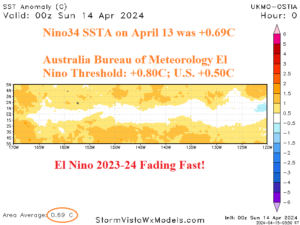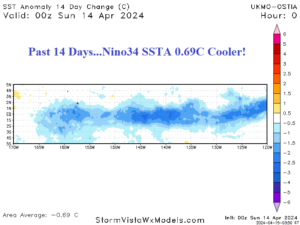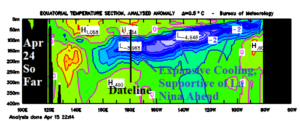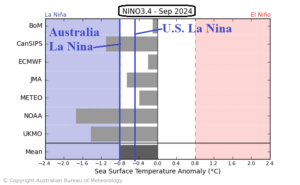Climate Impact Company Issues U.S. Summer 2024 Outlook
04/15/2024, 2:48 pm EDTNew Marine Heat Wave Off East Asia Coast
04/22/2024, 1:41 pm EDTHighlight: El Nino 2023-24 fades; Speed and intensity of La Nina development ahead uncertain (which makes climate forecasts less confident).


Fig. 1-2: The daily Nino34 SSTA index is +0.69C, beneath the Australia Bureau of Meteorology El Nino threshold (+0.8C) although marginally above the U.S. El Nino threshold (+0.5C). During the past 14 days, the Nino34 SSTA has cooled by 0.69C. The Nino34 SSTA is beneath the U.S. El Nino threshold by May 1st.

Fig. 3: Subsurface equatorial East Pacific upper ocean heat is steadily cooling and foreshadows La Nina ahead.

Fig. 4: However, conventional ENSO processes are likely disturbed due to the influence on global climate by a 12th straight month of a record warm ocean surface lead by southern hemisphere marine heat waves and record warm Atlantic tropics.

Fig. 5: Global oceanic warming may slow the La Nina development process as suggested Nino34 SSTA forecasts from ECMWF, Australia Bureau of Meteorology, and Meteo France while NOAA has an aggressive La Nina (by September).
